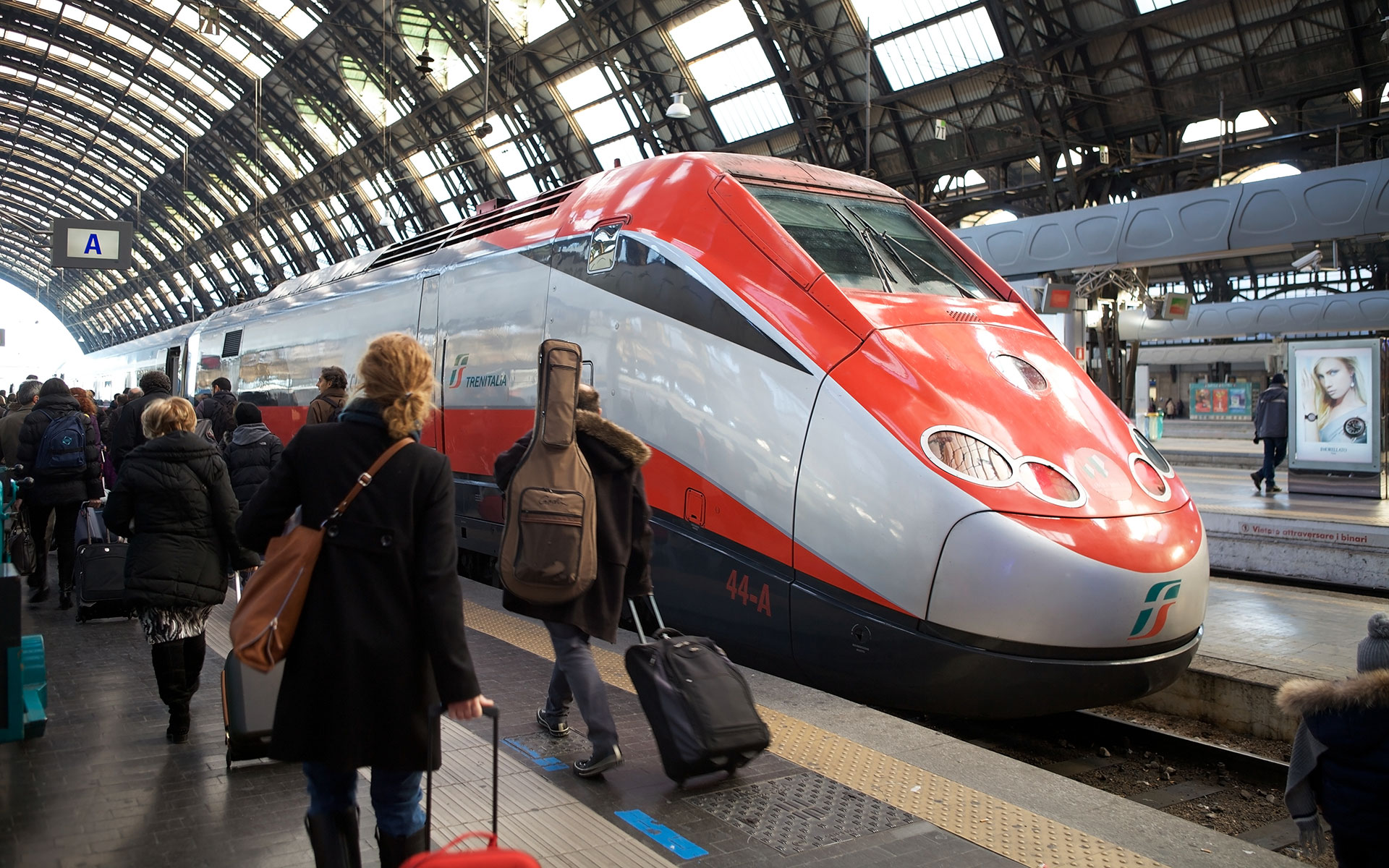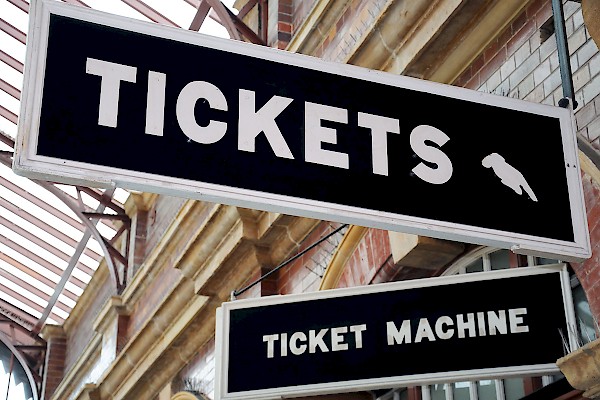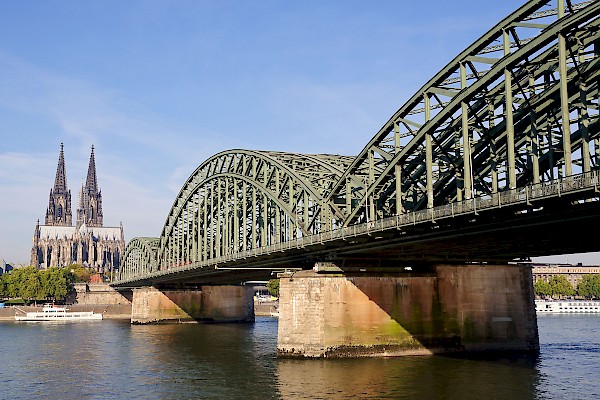Which travel class can I choose with my rail pass?
Trenitalia's hight-speed Frecciarossa trains offer four travel classes (photo © Antonella865 / dreamstime.com).
This note unravels all you need to know about travel classes on European trains. It is written with the needs of holders of rail passes in mind, but many aspects of what follows may be of interest to those travelling with point-to-point tickets. Bear in mind this article applies to trains you will use for daytime travel. The issue of accommodation classes on overnight trains is more complicated and it’s not something we look at here.
Bear in mind of course that in some countries a passholder supplement is payable to use fast trains. We don't focus on passholder supplements in this article. We are here looking as the different classes of on-board seating on daytime trains and where you should sit when using a rail pass. That varies of course according to whether you have a first class or second class rail pass.
Know the basics: first and second class
Most rail passes come in two variants, viz. second class and first class, the latter of course being that little bit more expensive but giving the pass holder access to first-class seating on trains. Bear in mind that not all trains in Europe offer first-class seating. On many daytime short-distance services, there is just a single category of seating, and there the purchase of a first-class pass brings no advantage.
You will however find first-class seating on most long-distance daytime trains, and if you are planning on spending a lot of time on such services then our view is that the extra cost of a first-class pass may well be money well spent. If you are planning on using mainly regional or local services with your pass, then the decision whether to upgrade to first may depend on which countries you are visiting. In countries like Germany and Switzerland, where many regional trains have a designated first-class seating area, the upgrade may make sense. But in countries like Ireland and Norway, where first class is rarely seen when you venture off the main lines, then you really would not want to pay the extra for a nominal upgrade when it doesn’t translate into any tangible benefit when you board the train.
With most passes you make the decision to opt for second class or first class when you buy your pass. It is not normally possible to upgrade after you have purchased your pass (although there are one or two exceptions to that general rule). So with Eurail or Interrail, you can choose between second or first. And that’s true of many national passes.
But there are exceptions. With the Britrail range of passes you’ll find a choice of classes for most passes, but for the Britrail Spirit of Scotland pass there is no first-class variant. And that makes sense because the great majority of trains in Scotland don’t have first-class seating.
In Italy, Trenitalia offers a pass for a fixed number of journeys on their high-speed rail network. On those premium trains there are more than two classes, so there the choice of passes becomes more complicated. The Trenitalia pass can be purchased for travel only in the lowest class, then there is a variant which allows travel in the top three classes and finally there are versions of the Trenitalia pass which can be used in all four classes, including the top-of-the-range executive class. This is rail travel designed for those who only very reluctantly leave their private jet at home. But before you splash out on that expensive Trenitalia pass which really includes executive class travel, just check that there is indeed an executive-class section on the trains where you propose to travel. You’ll find Trenitalia’s executive class on many of the company’s Frecciarossa trains.
Eurail and Interrail
To keep things simple, let’s look at how things pan out with Eurail and Interrail passes, these being the passes most commonly used by travellers exploring Europe by rail. With a second-class pass you can, subject to any small print rules about a need to get a seat reservations or pay a supplement, access the lowest class of accommodation on any train within the Interrail / Eurail pass network. That network covers the vast majority of trains across more than 30 European countries. You can also use a first-class pass in that lowest class of accommodation, but in practice you would only do that if your preferred train does not offer first class.
Second or standard class
This lowest class of accommodation is generally called second class or standard class. But there are other terms used. In Finland, for example, second-class seating is branded eco. In Spain, second class was for many years called turista, but latterly Spain has moved to referring to this class of seating as standard. By and large, travellers with second-class Interrail passes or Eurail passes will never go wrong. Just follow the crowds and join them in the main part of the train. Standard, second, economy… whatever it’s called, it’s perfectly safe, reasonably comfortable and most travellers won’t need anything more.
A recent innovation in France slightly blurs the boundaries for holders of second-class passes. All pass holders need to purchase a seat reservation for travel on TGV trains in France. Usually it’s €10 a shot, but where a train is already quite busy, then the price of that seat reservation as a pass holder hikes up to €20. Until recently, holders of a second-class pass could buy a seat reservation in second class, but in late 2022 French rail operator SNCF introduced an option for holders of second-class passes to upgrade to first class for a specific leg of their journey. Naturally this costs more that the normal €10 or €20 seat reservation fee in first class. We’ve seen upgrade fares (which include the first-class seat reservation) for around €35 to €50.
Where to sit with a first-class pass
As we have seen, there is little scope for confusion with a second-class pass. It’s pretty clear which part of the train is for you. So what of travellers who have first-class passes?
If the train has only one class of seating, then head for that. If there isn’t any first-class seating, you’ll just 'rough it' with the crowds in second class. Don’t worry. It’s only a train ride. And actually you may find it a lot more convivial than the hushed quiet to which you have become accustomed in first class.
If there are two categories of seating on the train, then the better one – which is most commonly called first class – is just for you. Take a seat, relax and enjoy that extra bit of space that is offered in first class. Usually you can identify the first-class section of the train by a prominent number 1 displayed on the outside of the carriages and of course also in the train. In some countries, a yellow band above the windows and doors on the outside of the carriage indicates the section reserved for passengers with first-class tickets or passes.
There are some countries where another term is used rather than first. In Finland, it is called ekstra, while in Spain’s it’s called comfort. On high-speed trains in Turkey, first class is dubbed business and that same term is also used in Sweden for the first-class section of the X2000 trains.
Things just get a wee bit complicated where trains have more than two classes of seating, leaving holders of first-class passes wondering which is the right bit of train for them. Across Europe as a whole, there are not that many daytime trains where there are three or more travel classes, but here are a few examples to keep you on track.
Eurostar, Thalys and Lyria
On Eurostar trains, there are three classes, respectively called business premier, standard premier and standard. With a first-class pass, you’ll be accommodated in standard premier, while second-class pass holders will ride standard.
On TGV Lyria trains, it’s much the same as on Eurostar. With a first-class pass, you’ll be accommodated in standard premier, while second-class pass holders will ride standard.
On Thalys trains, there is a three-class system, much the same as on Eurostar and TGV Lyria, but with different names. The classes are called premium, comfort and standard. With a first-class pass, you’ll be accommodated in comfort, while second-class pass holders will ride standard.
Railjet trains
On the Railjet network operated by ÖBB and CD, and extending over seven countries, you’ll also find a three-class system, where the respective sections are called business, first and economy. First-class pass holders ride in first of course, and it’ll be no surprise to hear that travellers with second-class passes travel in economy. Upon payment of a supplement, usually €15, it is permissible for holders of first-class passes to upgrade to the posh business section on Railjet trains.
Swiss exceptions
The vast majority of daytime trains in Switzerland offer just two travel classes, so the place allocations for first and second-class pass holders is generally easy. Actually, Switzerland is a joy for holders of first-class passes as there is a dedicated first-class section on almost all Swiss trains.
On Railjet trains that run into Switzerland, there is the three-class system mentioned above. Then there are occasional tourist trains on narrow-gauge mountain railways which have a three-class system. Most holders of rail passes will probably never run across these, but let’s give them a quick mention.
On selected Glacier Express journeys there is, in addition to the regular first and second-class carriages, also a dedicated premium coach which is marketed as excellence class. It’ll be obvious that holders of first-class passes travel in first while travellers with second-class passes will join the second-class carriages. But there is an option, which needs to be prebooked, for first-class pass holders to upgrade to excellence class. There is a mighty supplement of 470 Swiss francs, for which you get personal concierge service and what by all accounts is a magnificent meal.
On the Montreux-Oberland-Bahn – branded as Golden Pass – which runs up into the Bernese Alps from Montreux on the shores of Lake Geneva there is on some MOB trains, in addition to the regular second and first-class sections, also a small VIP section. First-class pass holders can upgrade to VIP class on payment of a small supplement which is 5, 10 or 15 Swiss francs depending on the length of the journey. As of early July 2023, that VIP upgrade cannot be pre-purchased but, subject to seats being available, is just paid on the train.
On a small number of new MOB trains from Montreux to Zweisimmen and beyond there is, instead of a VIP section, an area of first-class seating denominated as Prestige 1. This carries a supplement, beyond the regular first class fare, of 35 Swiss francs. Holders of first-class rail passes wanting to sit in Prestige 1 need to pay this 35 franc supplement. Elsewhere on these new MOB trains there is of course just regular second and first class seating open to pass holders with the requisite passes.
A British oddity
Lots of trains in Britain just have one class. But if you have a first-class pass, it’s worth checking around. For example, if you travel from London to Edinburgh on a train operated by Lumo, then you’ll only find standard-class seating. But rival operator LNER on that same route offers a choice of standard or first. In the latter, you’ll enjoy complimentary meals and drinks, so holders of first-class passes may well prefer to opt for LNER.
There is only one operator of daytime trains in Britain which routinely offers three travel classes. This is Avanti West Coast (AWC), where the three classes are called first, standard premium and standard. Holders of first-class passes travel in first on AWC trains, while anyone with a second-class pass goes in standard. So this is an unusual case where the middle class is not routinely available for pass holders. Food and drinks are free in first class on AWC trains, so that’s a nice perk for holders of a first-class pass.
Navigating Italian classes
Eurail and Interrail passes are not valid at all on NTV Italo trains, so what follows here on Italy refers only to Trenitalia. Many regional trains are second class only. On Trenitalia Intercity trains, there’s the well understood binary distinction between first and second. On high-speed trains, the situation becomes more complicated. On some services there are as many as four travel classes. From the poshest working down, these are called executive, business, premium and standard. We tend to think of executive and business as being different variants of first class. While premium and standard are both renderings of second class.
If you are travelling with a first-class Interrail or Eurail pass, then you get to sit in the business-class section of a Trenitalia high-speed train. If you have a second-class pass, then you’ll be allocated a place in the standard part of the train.
Central European class distinctions
We are now getting into the high theology of where pass holders should sit on trains. There are three as yet unmentioned central European rail operators which offer more than two classes and all are complicated when it comes to holders of Interrail and Eurail passes.
On Westbahn trains, there are three classes. They are called first, comfort and standard. This is a really unusual case as all Interrail and Eurail pass holders travel in standard on Westbahn trains. Holders of first-class passes can however pay a fee to upgrade to comfort class or first class.
Leo Express offer four classes on their trains. They are called premium, business, standard plus and economy. If you have a first-class pass, you can reserve a seat in the business section of the train. With a second-class pass you’ll ride in the economy section of the train.
RegioJet also have four classes, but the rules are different from Leo Express. On Regiojet, the classes are called business, relax, standard and low cost. With a first-class pass, you can reserve a seat in the top class, ie. business. With a second-class pass you can reserve in any of the three lower classes, viz. low-cost, standard or relax. The reservation fees are very modest, and it usually costs only about one euro extra to upgrade from low-cost to standard, or about two euros to upgrade from low-cost to relax. It’s worth paying that little bit extra.
Small print
Some will say we have only scraped the surface of a hugely complicated subject. But we have tried to cover many of the main train companies, and their associated travel classes, likely to be encountered by travellers using Interrail or Eurail passes to explore Europe. Whatever kind of pass you hold, don’t forget to take along a copy of our book Europe by Rail: The Definitive Guide. The 17th edition of the book was first published in April 2022. It was reprinted in September 2022 and again in July 2023.






About The Authors
Nicky Gardner and Susanne Kries
Nicky and Susanne manage hidden europe, a Berlin-based editorial bureau that supplies text and images to media across Europe. Together they edit hidden europe magazine. Nicky and Susanne are dedicated slow travellers and the authors of the book Europe by Rail: The Definitive Guide. The 17th edition of that book was published in 2022 and reprinted in July 2023. You'll find a list of outlets that sell the book on this website.